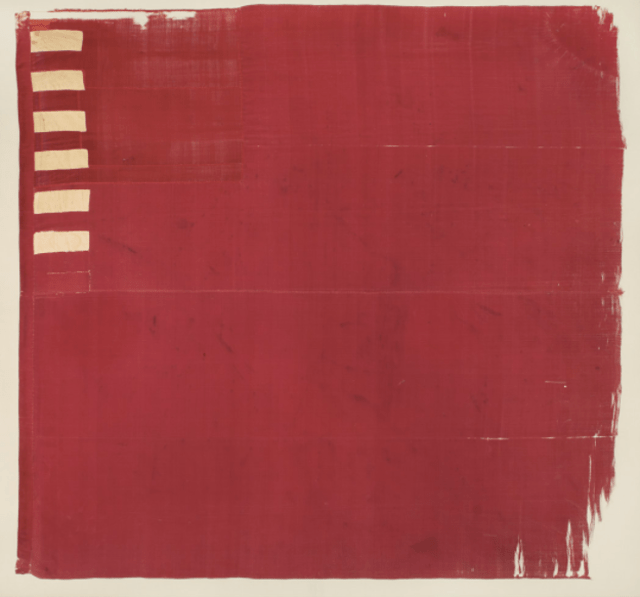Contents
Contents

Early in the American Revolution, the Forster Flag was flown by American forces from Manchester, Massachusetts, under the command of Samuel Forster.
During the early stages of the war, there was no American flag – each militia had its own ensign. The Forster Flag was created in 1775 by the Massachusetts Minutemen, and used during the Battle of Lexington and Concord on April 19, 1775.
Design and origin
The Forster Flag is square, crimson in color, and features 13 short, white stripes, to represent the Thirteen Colonies of America – with six stripes on one side, and seven on the other.
Originally, this was a British flag – the British Red Ensign, and the corners with the stripes most likely featured the Union Flag. The fabric of the British flag may have been cut out by the Minutemen of Massachusetts, and the white parts used on the new flag to represent the 13 American colonies.

The flag is named after Samuel Forster, a former sailor and leader of the Massachusetts forces.
His family retained the flag after the war ended, and it was used in the Massachusetts State Capitol building for a short period in the early 1800s. The original was donated to the Flag Heritage Foundation in 1975 and is currently owned by the University of Texas at Austin. It was put up for sale in 2014, but failed to meet the minimum reserve at auction and is still owned by the university.
Usage
This flag was intended to help organize troops in battle. Each militia would have its own flag, often with certain imagery specific to that colony, and soldiers would follow their commanders into position, or into battle, under the flag. This is why the original Forster Flag is quite large – it measures approximately nine feet by nine feet.
However, the Manchester Company did not see action in the Battle of Lexington and Concord – by the time they reached the battlefield, British forces had retreated.
The Forster Flag was used on a 33c stamp from the year 2000 called The Stars and Stripes: Forster Flag.
Historical significance
The Forster Flag is likely the first-ever representation of the British colonies with stripes. This method of representing American states would remain an iconic feature of later United States flags such as the Betsy Ross, the Star-Spangled Banner, and the current Stars and Stripes.
The choice of imagery used on the flag is quite remarkable in that it demonstrates the unity of the 13 British colonies at the start of the American Revolution. The decision to represent the colonies as a single, united force, rather than focusing on imagery related to Massachusetts, is regarded as quite profound by modern historians.
The Forster Flag is possibly the oldest flag from the Revolutionary War that is still intact today. Many flags of the time have perished over the years or been cut up and sold as souvenirs, or even repurposed for use in future conflicts.


